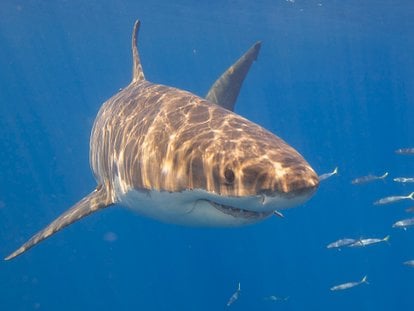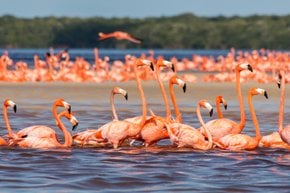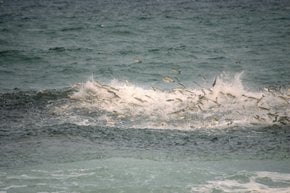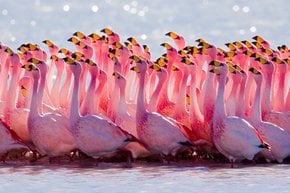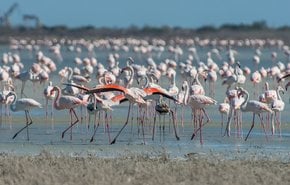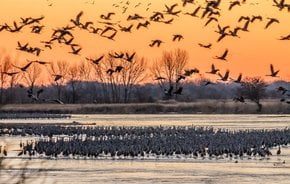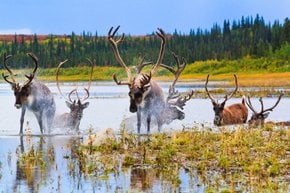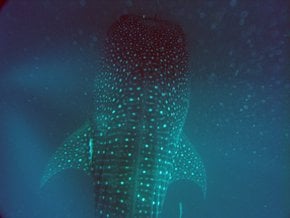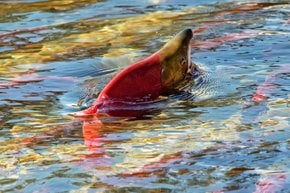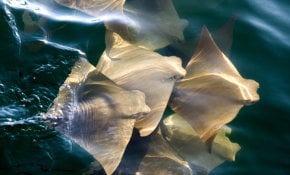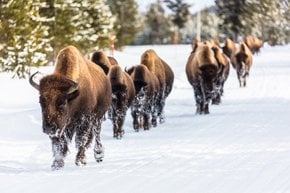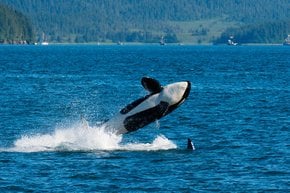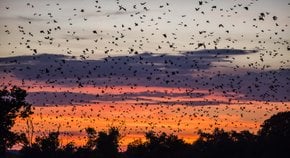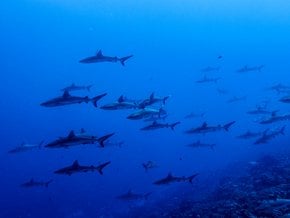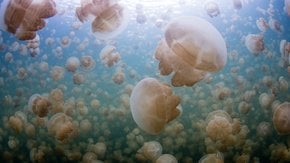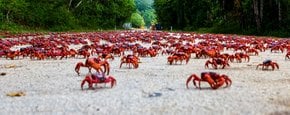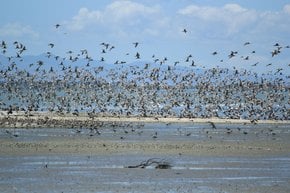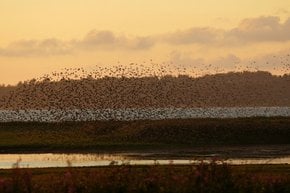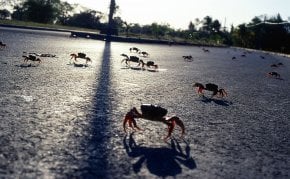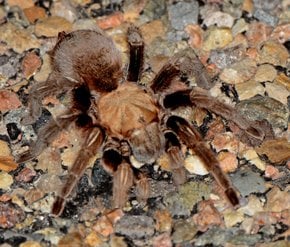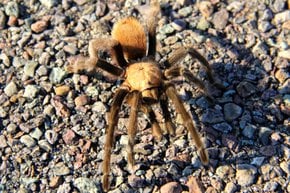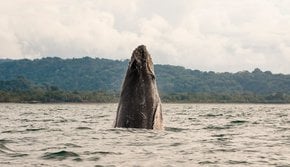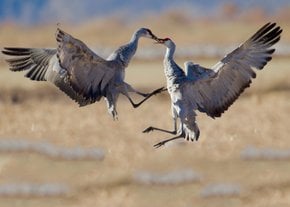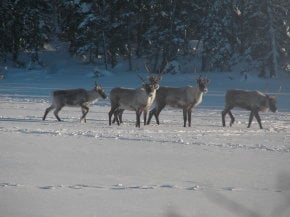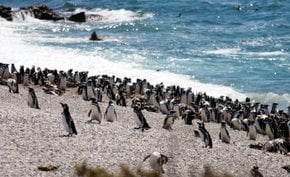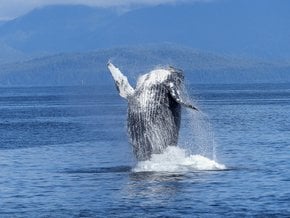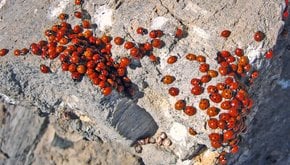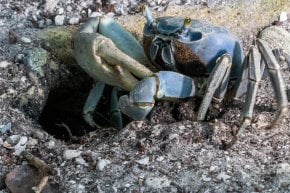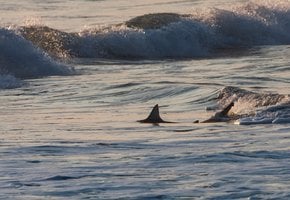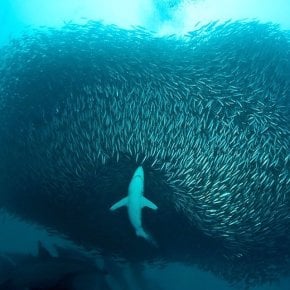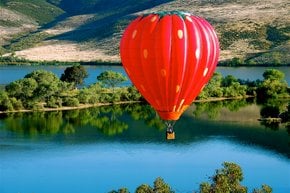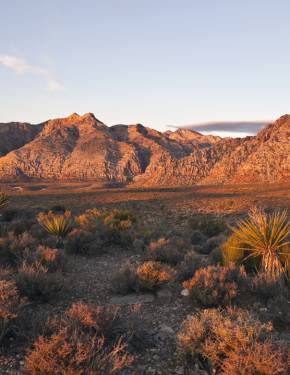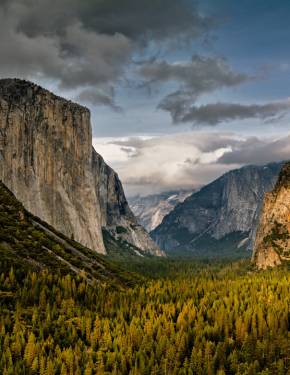Grandes Tubarões Brancos em Califórnia 2026
À medida que as águas oceânicas se aquecem, os tubarões brancos iniciam a sua migração anual entre o México e o sul da Califórnia
Melhor altura: Agosto-Setembro
Na história da Califórnia, houve apenas nove mortes causadas por grandes tubarões brancos. Esta estatística mostra que os ataques de tubarões são extremamente raros. No entanto, tubarões brancos são as únicas espécies que você pode encontrar nas águas da Califórnia que representam perigo para os humanos, por isso é importante estar ciente
Great white sharks can live up to 70 years, with males reaching sexual maturity around 9-10 years and females at 14-16 years. Females give birth to litters of two to fourteen pups, each about 4-5 feet long at birth. Young sharks, known as juveniles, typically inhabit warmer, shallow waters close to shore, which serve as their nursery grounds.
Os tubarões brancos são mais abundantes nas águas ao longo da costa oeste da península de Baja Califórnia no México. Os cientistas estimam sua população em cerca de 300. Quando o oceano se aquece perto dos EUA. Costa Califórnia, tubarões migram frequentemente para o norte ao longo da costa. Seus números máximos são registrados na Califórnia em agosto e setembro, mas tubarões podem ser vistos durante o resto do ano também
Os tubarões brancos são vistos mais frequentemente perto das Ilhas do Canal, em Point Conception, bem como perto das praias de Santa Bárbara, Baía de Santa Mônica, Long Beach, Huntington Beach, e perto de San Clemente. No norte, aparecem perto das Ilhas Farallon, da Ilha de Año Nuevo e da Ponte de Tomales.
Os tubarões brancos são muitas vezes temidos devido ao seu tamanho impressionante. Espécies adultas pesam entre 4.000 e 5.000 lbs (1-3 t). Alimentam-se de peixes e mamíferos marinhos. Jovens focas elefantes são suas principais presas na Califórnia. Acredita-se que grandes tubarões brancos vivem até 70 anos.
California's "Red Triangle" is notorious for its high incidence of shark attacks. Over one-third of all great white shark attacks in the United States occur in this region. The region's moniker, the "Red Triangle," reflects its dangerous reputation, covering roughly 200 miles of coastline. It begins around Bodega Bay, extends southward to about 50 miles west of San Francisco, and concludes in the Big Sur region.
However, it's not the beachgoers and surfers that attract these formidable predators. Instead, the Red Triangle is teeming with marine mammals such as elephant seals, harbor seals, sea lions, and sea otters, which are the preferred prey for great whites. As apex predators, great white sharks play a critical role in the marine ecosystem by maintaining the balance of species below them in the food chain. They primarily feed on marine mammals, as well as fish and seabirds. Their hunting strategy involves powerful, stealthy ambush attacks, using their keen sense of smell and ability to detect electromagnetic fields to locate prey.
Despite their preference for marine mammals, great whites occasionally come into contact with humans. Contrary to the popular myth that great whites mistake surfers for seals due to poor eyesight, these sharks actually have excellent vision. Their interactions with humans are often the result of their curious nature, leading them to "taste test" unfamiliar objects, including people. Globally, great white sharks are responsible for more human attacks than any other shark species. Nonetheless, it's important to remember that shark attacks remain rare, and the overall risk to beachgoers is still minimal. Since record-keeping began, there have been only 16 fatal shark attacks in California.
For those interested in observing Great White Sharks, guided tours are available at various locations along the California coast. Participants might spot both juveniles and adults up to 20 feet long, and along the way, may also encounter humpback whales and dolphins. Polarized sunglasses are recommended for spotting these magnificent creatures, as dark shadows and dorsal tips breaking the water's surface are key indicators.
A thrilling cage diving adventure provides participants with the chance to get into the water with great white sharks or observe their predatory behavior from the deck. No dive experience is necessary, with certified instructors guiding divers through everything they need to know. Whether diving or serving as a lookout for shark activity, participants play a crucial role in this adventure.
Most Great White Shark viewing locations are easily accessible from major Californian cities. For example, the Channel Islands can be reached via boat tours departing from Ventura or Oxnard, both of which are roughly an hour's drive from Los Angeles. Santa Barbara beaches and Point Conception are also within a short drive from urban centers, making them convenient for day trips. For those visiting Año Nuevo Island or Tomales Point, the nearest major city is San Francisco, about a 90-minute drive away. These areas are well-equipped with visitor facilities, including restrooms, picnic areas, and informational signage.

